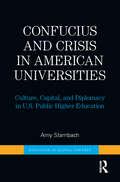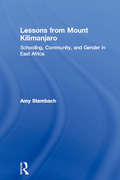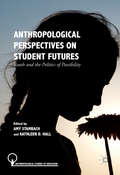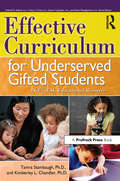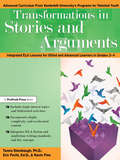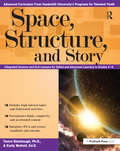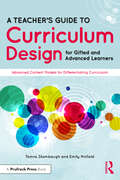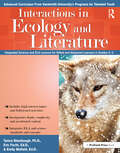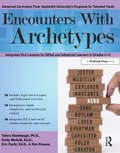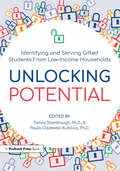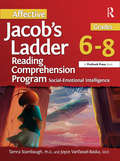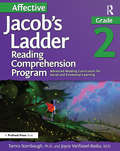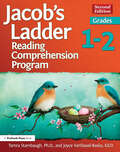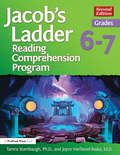- Table View
- List View
Confucius and Crisis in American Universities: Culture, Capital, and Diplomacy in U.S. Public Higher Education (Education in Global Context)
by Amy StambachChina’s investment in U.S. higher education has raised considerable debate, but little research has been directed to the manner in which this investment unfolds and takes shape on the ground in local contexts. Confucius and Crisis in American Universities fills this gap by closely investigating how Chinese-funded U.S. programs are understood and configured in the modern American university. Drawing on interviews with Chinese teachers and their American students, as well as conversations with university administrators, this book argues that Chinese investment in American higher education serves as a broad form of global policy, harnessing the power of intercultural exchange as a means of managing international diplomatic relations through the experiences of university students. A transnational study, Confucius and Crisis in American Universities questions and reframes conventional notions of economic globalization and flexible citizenship, demonstrating how Chinese investment in U.S. education advances the lives of the already-privileged by creating access to overseas labor and markets, but to the exclusion of middle- and working-class students. A valuable and timely resource for scholars of education and anthropology, this book will also be useful to anyone interested in education policy or international affairs.
Confucius and Crisis in American Universities: Culture, Capital, and Diplomacy in U.S. Public Higher Education (Education in Global Context)
by Amy StambachChina’s investment in U.S. higher education has raised considerable debate, but little research has been directed to the manner in which this investment unfolds and takes shape on the ground in local contexts. Confucius and Crisis in American Universities fills this gap by closely investigating how Chinese-funded U.S. programs are understood and configured in the modern American university. Drawing on interviews with Chinese teachers and their American students, as well as conversations with university administrators, this book argues that Chinese investment in American higher education serves as a broad form of global policy, harnessing the power of intercultural exchange as a means of managing international diplomatic relations through the experiences of university students. A transnational study, Confucius and Crisis in American Universities questions and reframes conventional notions of economic globalization and flexible citizenship, demonstrating how Chinese investment in U.S. education advances the lives of the already-privileged by creating access to overseas labor and markets, but to the exclusion of middle- and working-class students. A valuable and timely resource for scholars of education and anthropology, this book will also be useful to anyone interested in education policy or international affairs.
Lessons from Mount Kilimanjaro: Schooling, Community, and Gender in East Africa
by Amy StambachFirst Published in 2000. Routledge is an imprint of Taylor & Francis, an informa company.
Lessons from Mount Kilimanjaro: Schooling, Community, and Gender in East Africa
by Amy StambachFirst Published in 2000. Routledge is an imprint of Taylor & Francis, an informa company.
Anthropological Perspectives on Student Futures: Youth and the Politics of Possibility (Anthropological Studies of Education)
by Amy Stambach Kathleen D. HallThis book examines diverse ways in which young people from around the world envision and prepare for their future education, careers, and families. The book features cutting-edge anthropological essays including ethnographic accounts of schooling in India, South Africa, the US, Bhutan, Tanzania, and Nigeria. Each chapter focuses on today’s generation of students and on students' use of education to create new possibilities for themselves. This volume will be of particular interest to practicing teachers and anthropologists and to readers who seek an ethnographic understanding of the world as seen through the eyes of students.
Effective Curriculum for Underserved Gifted Students: A CEC-TAG Educational Resource
by Tamra Stambaugh Kimberley ChandlerEffective Curriculum for Underserved Gifted Students explains the need for a differentiated curriculum for gifted students typically underrepresented in gifted programs, including children of poverty and those who are from culturally and linguistically diverse populations. Features of research-based curriculum found to be effective in enhancing the academic achievement of these populations are highlighted. In addition, practical, evidence-based strategies for curriculum development and instruction are shared.
Effective Curriculum for Underserved Gifted Students: A CEC-TAG Educational Resource
by Tamra Stambaugh Kimberley ChandlerEffective Curriculum for Underserved Gifted Students explains the need for a differentiated curriculum for gifted students typically underrepresented in gifted programs, including children of poverty and those who are from culturally and linguistically diverse populations. Features of research-based curriculum found to be effective in enhancing the academic achievement of these populations are highlighted. In addition, practical, evidence-based strategies for curriculum development and instruction are shared.
Transformations in Stories and Arguments: Integrated ELA Lessons for Gifted and Advanced Learners in Grades 2-4
by Tamra Stambaugh Eric Fecht Kevin FinnTransformations in Stories and Arguments explores essential questions, such as "How does the development of a character build the reader's understanding? How do the actions of others change the world? How do words and images impact our thinking?" This unit, developed by Vanderbilt University's Programs for Talented Youth, is aligned to the Common Core State Standards and features accelerated content, creative products, differentiated tasks, engaging activities, and the use of in-depth analysis models to develop sophisticated skills in the language arts. Through the lens of transformation, students will examine narrative and persuasive elements essential to the analysis of short stories, advertisements, visual art, scientific argumentation, and their own writing. Students will discover transformations in themselves and their written work as they craft and revise narrative and persuasive pieces, realizing their own voice in the process. Ideal for gifted classrooms or gifted pull-out groups, the unit features stories by Dan Santat, Fiona Roberton, Jannell Cannon, Christopher Myers, Maurice Sendak, Daniel Manus Pinkwater, Jane Yolen, and Patricia Polacco; poetry by Carl Sandburg; sculptures by Arturo Di Modica and Kristen Visbal; a viewing of Pixar's short film Lou and a variety of commercials; and engaging short nonfiction readings.Winner of the 2015 NAGC Curriculum Studies AwardGrades 2-4
Transformations in Stories and Arguments: Integrated ELA Lessons for Gifted and Advanced Learners in Grades 2-4
by Tamra Stambaugh Eric Fecht Kevin FinnTransformations in Stories and Arguments explores essential questions, such as "How does the development of a character build the reader's understanding? How do the actions of others change the world? How do words and images impact our thinking?" This unit, developed by Vanderbilt University's Programs for Talented Youth, is aligned to the Common Core State Standards and features accelerated content, creative products, differentiated tasks, engaging activities, and the use of in-depth analysis models to develop sophisticated skills in the language arts. Through the lens of transformation, students will examine narrative and persuasive elements essential to the analysis of short stories, advertisements, visual art, scientific argumentation, and their own writing. Students will discover transformations in themselves and their written work as they craft and revise narrative and persuasive pieces, realizing their own voice in the process. Ideal for gifted classrooms or gifted pull-out groups, the unit features stories by Dan Santat, Fiona Roberton, Jannell Cannon, Christopher Myers, Maurice Sendak, Daniel Manus Pinkwater, Jane Yolen, and Patricia Polacco; poetry by Carl Sandburg; sculptures by Arturo Di Modica and Kristen Visbal; a viewing of Pixar's short film Lou and a variety of commercials; and engaging short nonfiction readings.Winner of the 2015 NAGC Curriculum Studies AwardGrades 2-4
Space, Structure, and Story: Integrated Science and ELA Lessons for Gifted and Advanced Learners in Grades 4-6
by Tamra Stambaugh Emily MofieldWinner of the 2017 NAGC Curriculum Studies Award Space, Structure, and Story integrates Earth and space science with science fiction and nonfiction texts, poetry, and art. This unit, developed by Vanderbilt University's Programs for Talented Youth, is aligned to the Common Core State Standards and Next Generation Science Standards. Students explore advanced science and ELA content through the lens of structure—its parts, purpose, and function. Mobius strips, the hero's journey, dystopian fiction, black holes, Einstein's relativity, stars, and moons are just a few of the captivating in-depth topics explored through accelerated content, engaging activities, and differentiated tasks. Ideal for gifted classrooms or gifted pull-out groups, the unit features poetry from Carl Sandburg, Henry Wadsworth Longfellow, and C. S. Lewis; art from M. C. Escher, Vincent Van Gogh, Claude Monet, and Salvador Dali; a novel study featuring A Wrinkle in Time by Madeleine L'Engle; short stories from Isaac Asimov and Ray Bradbury; speeches from President John F. Kennedy and President Barack Obama; and informational texts about gravity, orbits, and black holes. Grades 4-6
Space, Structure, and Story: Integrated Science and ELA Lessons for Gifted and Advanced Learners in Grades 4-6
by Tamra Stambaugh Emily MofieldWinner of the 2017 NAGC Curriculum Studies Award Space, Structure, and Story integrates Earth and space science with science fiction and nonfiction texts, poetry, and art. This unit, developed by Vanderbilt University's Programs for Talented Youth, is aligned to the Common Core State Standards and Next Generation Science Standards. Students explore advanced science and ELA content through the lens of structure—its parts, purpose, and function. Mobius strips, the hero's journey, dystopian fiction, black holes, Einstein's relativity, stars, and moons are just a few of the captivating in-depth topics explored through accelerated content, engaging activities, and differentiated tasks. Ideal for gifted classrooms or gifted pull-out groups, the unit features poetry from Carl Sandburg, Henry Wadsworth Longfellow, and C. S. Lewis; art from M. C. Escher, Vincent Van Gogh, Claude Monet, and Salvador Dali; a novel study featuring A Wrinkle in Time by Madeleine L'Engle; short stories from Isaac Asimov and Ray Bradbury; speeches from President John F. Kennedy and President Barack Obama; and informational texts about gravity, orbits, and black holes. Grades 4-6
A Teacher's Guide to Curriculum Design for Gifted and Advanced Learners: Advanced Content Models for Differentiating Curriculum
by Tamra Stambaugh Emily MofieldA Teacher’s Guide to Curriculum Design for Gifted and Advanced Learners provides educators with models and strategies they can easily use to create appropriately complex differentiated lessons, questions, tasks, and projects. This must-have resource for both gifted and regular education teachers: Includes specific thinking models for teaching English language arts, social studies, and STEM. Is ideal for teachers who are looking for ways to differentiate and design lessons for their highest achieving students. Provides multiple examples of how to embed complexity within standards-based lessons. Highlights units and models from Vanderbilt University's Programs for Talented Youth curriculum. Helps teachers provide the necessary challenge for advanced learners to thrive. The models have been vetted by content experts in the relevant disciplines and were designed to guide students to develop expertise within a discipline. Definitions of widely used terms, such as depth, complexity, and abstractness, are explained and linked to models within specific content areas to support common understanding and application of schoolwide differentiation strategies.
A Teacher's Guide to Curriculum Design for Gifted and Advanced Learners: Advanced Content Models for Differentiating Curriculum
by Tamra Stambaugh Emily MofieldA Teacher’s Guide to Curriculum Design for Gifted and Advanced Learners provides educators with models and strategies they can easily use to create appropriately complex differentiated lessons, questions, tasks, and projects. This must-have resource for both gifted and regular education teachers: Includes specific thinking models for teaching English language arts, social studies, and STEM. Is ideal for teachers who are looking for ways to differentiate and design lessons for their highest achieving students. Provides multiple examples of how to embed complexity within standards-based lessons. Highlights units and models from Vanderbilt University's Programs for Talented Youth curriculum. Helps teachers provide the necessary challenge for advanced learners to thrive. The models have been vetted by content experts in the relevant disciplines and were designed to guide students to develop expertise within a discipline. Definitions of widely used terms, such as depth, complexity, and abstractness, are explained and linked to models within specific content areas to support common understanding and application of schoolwide differentiation strategies.
Interactions in Ecology and Literature: Integrated Science and ELA Lessons for Gifted and Advanced Learners in Grades 2-3
by Tamra Stambaugh Emily Mofield Eric FechtWinner of the 2015 NAGC Curriculum Studies Award Interactions in Ecology and Literature integrates ecology with the concept of interactions and the reading of fictional and informational texts. This unit, developed by Vanderbilt University's Programs for Talented Youth, is aligned to the Common Core State Standards for English Language Arts and Next Generation Science Standards. Students will research questions such as "Should animals be kept in zoos?" and "Should humans intervene to control overpopulation of species?" They will examine relationships among living things and the environment as well as relationships between literary elements in texts through accelerated content, engaging activities, and differentiated tasks. Ideal for gifted classrooms or gifted pull-out groups, the unit features fictional texts from Lynne Cherry, Katherine Applegate, and Jacqueline Woodson; art from Mark Rothko and Georges Seurat; informational texts about deforestation and a variety of animals; biographies about Michael Jordan, J. K. Rowling, and Walt Disney; and videos about food chains, food webs, and more. Grades 2-3
Interactions in Ecology and Literature: Integrated Science and ELA Lessons for Gifted and Advanced Learners in Grades 2-3
by Tamra Stambaugh Emily Mofield Eric FechtWinner of the 2015 NAGC Curriculum Studies Award Interactions in Ecology and Literature integrates ecology with the concept of interactions and the reading of fictional and informational texts. This unit, developed by Vanderbilt University's Programs for Talented Youth, is aligned to the Common Core State Standards for English Language Arts and Next Generation Science Standards. Students will research questions such as "Should animals be kept in zoos?" and "Should humans intervene to control overpopulation of species?" They will examine relationships among living things and the environment as well as relationships between literary elements in texts through accelerated content, engaging activities, and differentiated tasks. Ideal for gifted classrooms or gifted pull-out groups, the unit features fictional texts from Lynne Cherry, Katherine Applegate, and Jacqueline Woodson; art from Mark Rothko and Georges Seurat; informational texts about deforestation and a variety of animals; biographies about Michael Jordan, J. K. Rowling, and Walt Disney; and videos about food chains, food webs, and more. Grades 2-3
Encounters With Archetypes: Integrated ELA Lessons for Gifted and Advanced Learners in Grades 4-5
by Tamra Stambaugh Emily Mofield Eric Fecht Kim KnaussEncounters With Archetypes integrates the study of archetypes with the concept of encounters. This unit, developed by Vanderbilt University's Programs for Talented Youth, is aligned to the Common Core State Standards and features accelerated content, creative products, differentiated tasks, engaging activities, and the use of in-depth analysis models to develop sophisticated skills in the language arts. Through the lens of encounter, students will examine the patterns, symbols, and motifs associated with common archetypes by analyzing fictional and informational texts, speeches, and visual media. Students will follow various archetype encounters with conflicts and challenges to explore questions such as “How do archetypes reflect the human experience?” and “How do archetypes reveal human strengths and weaknesses?" Ideal for gifted classrooms or gifted pull-out groups, the unit features texts from Sandra Cisneros, Louis Untermeyer, Rudyard Kipling, Emily Dickinson, and Maya Angelou; biographies of Oprah Winfrey, Mother Teresa, Jackie Robinson, Sally Ride, and Lin-Manuel Miranda; a speech from President Ronald Reagan; a novel study featuring Wonder by R. J. Palacio and/or Counting by 7s by Holly Goldberg Sloan; and art from Pieter Bruegel. Grades 4-5
Encounters With Archetypes: Integrated ELA Lessons for Gifted and Advanced Learners in Grades 4-5
by Tamra Stambaugh Emily Mofield Eric Fecht Kim KnaussEncounters With Archetypes integrates the study of archetypes with the concept of encounters. This unit, developed by Vanderbilt University's Programs for Talented Youth, is aligned to the Common Core State Standards and features accelerated content, creative products, differentiated tasks, engaging activities, and the use of in-depth analysis models to develop sophisticated skills in the language arts. Through the lens of encounter, students will examine the patterns, symbols, and motifs associated with common archetypes by analyzing fictional and informational texts, speeches, and visual media. Students will follow various archetype encounters with conflicts and challenges to explore questions such as “How do archetypes reflect the human experience?” and “How do archetypes reveal human strengths and weaknesses?" Ideal for gifted classrooms or gifted pull-out groups, the unit features texts from Sandra Cisneros, Louis Untermeyer, Rudyard Kipling, Emily Dickinson, and Maya Angelou; biographies of Oprah Winfrey, Mother Teresa, Jackie Robinson, Sally Ride, and Lin-Manuel Miranda; a speech from President Ronald Reagan; a novel study featuring Wonder by R. J. Palacio and/or Counting by 7s by Holly Goldberg Sloan; and art from Pieter Bruegel. Grades 4-5
Unlocking Potential: Identifying and Serving Gifted Students From Low-Income Households
by Tamra Stambaugh Paula Olszewski-KubiliusWinner of NAGC's 2021 Book of the Year Award This edited book, written by authors with extensive experience in working with gifted students from low-income households, focuses on ways to translate the latest research and theory into evidence-supported practices that impact how schools identify and serve these students. Readers will: Learn about evidence-supported identification systems, tools, and strategies for finding students from low-income households. Discover curriculum models, resources, and instructional strategies found effective from projects focused on supporting these students. Understand the important role that intra- and interpersonal skills, ethnicity/race, families, school systems, and communities play. Consider the perceptions of gifted students who grew up in low-income households. Learn how educators can use their experiences to strengthen current services. Unlocking Potential is the go-to resource for an up-to-date overview of best practices in identification, curriculum, instruction, community support, and program design for gifted learners from low-income households.
Unlocking Potential: Identifying and Serving Gifted Students From Low-Income Households
by Tamra Stambaugh Paula Olszewski-KubiliusWinner of NAGC's 2021 Book of the Year Award This edited book, written by authors with extensive experience in working with gifted students from low-income households, focuses on ways to translate the latest research and theory into evidence-supported practices that impact how schools identify and serve these students. Readers will: Learn about evidence-supported identification systems, tools, and strategies for finding students from low-income households. Discover curriculum models, resources, and instructional strategies found effective from projects focused on supporting these students. Understand the important role that intra- and interpersonal skills, ethnicity/race, families, school systems, and communities play. Consider the perceptions of gifted students who grew up in low-income households. Learn how educators can use their experiences to strengthen current services. Unlocking Potential is the go-to resource for an up-to-date overview of best practices in identification, curriculum, instruction, community support, and program design for gifted learners from low-income households.
Affective Jacob's Ladder Reading Comprehension Program: Grades 6-8
by Tamra Stambaugh Joyce VanTassel-BaskaThe Affective Jacob's Ladder Reading Comprehension Program uses a models approach to scaffold student learning and promote inquiry-based discussions of texts. This series of Jacob's Ladder: Focuses specifically on supporting advanced students' social-emotional needs.Includes high-interest reading selections in the following genres: short stories and media, poetry, and biographies.Moves students from lower to higher level skills of self-awareness, metacognition, and goal setting.Integrates reading comprehension and analysis skills with affective and social-emotional needs.Asks students to apply themes, character or real-life experiences, and lessons from texts to their own lives. New ladders were specially designed for this series and derived from relevant theories about empathy, risk and resilience, achievement motivation, and mindsets and practices for cultivating talent. The Affective Jacob's Ladder guides provide teachers with an explanation of the nature and substance of the theoretical constructs for each ladder. Also included are an overview of the goals and objectives of each ladder and suggestions for how to implement the ladders in the classroom in a way that supports students' academic and social-emotional needs at the same time. Optional Student Workbook Packs In addition to this teacher's guide, companion student workbooks are available for Short Stories and Media, Poetry and Song Lyrics, and Biographies, Essays, and Speeches. The student workbooks feature ample room for student responses and notes, make reviewing and providing feedback on student work easier than ever, provide students with an easy-to-use reference to use during discussions, and save time, as there is no need to reproduce student handouts.
Affective Jacob's Ladder Reading Comprehension Program: Grade 2
by Tamra Stambaugh Joyce VanTassel-BaskaThe Affective Jacob's Ladder Reading Comprehension Program uses a models approach to scaffold student learning and promote inquiry-based discussions of texts. This series of Jacob's Ladder: Focuses specifically on supporting advanced students' social-emotional needs. Includes high-interest reading selections in the following genres: short stories and media, poetry, and biographies. Moves students from lower to higher level skills of self-awareness, metacognition, and goal setting. Integrates reading comprehension and analysis skills with affective and social-emotional needs. Asks students to apply themes, character or real-life experiences, and lessons from texts to their own lives. New ladders were specially designed for this series and derived from relevant theories about empathy, risk and resilience, achievement motivation, and mindsets and practices for cultivating talent. The Affective Jacob's Ladder guides provide teachers with an explanation of the nature and substance of the theoretical constructs for each ladder. Also included are an overview of the goals and objectives of each ladder and suggestions for how to implement the ladders in the classroom in a way that supports students' academic and social-emotional needs at the same time. Optional Student Workbooks In addition to this teacher's guide, companion student workbooks are available for Picture Books, Short Stories and Media, and Poetry and Biographies. The student workbooks feature ample room for student responses and notes, make reviewing and providing feedback on student work easier than ever, provide students with an easy-to-use reference to use during discussions, and save time, as there is no need to reproduce student handouts.
Affective Jacob's Ladder Reading Comprehension Program: Grades 6-8
by Tamra Stambaugh Joyce VanTassel-BaskaThe Affective Jacob's Ladder Reading Comprehension Program uses a models approach to scaffold student learning and promote inquiry-based discussions of texts. This series of Jacob's Ladder: Focuses specifically on supporting advanced students' social-emotional needs.Includes high-interest reading selections in the following genres: short stories and media, poetry, and biographies.Moves students from lower to higher level skills of self-awareness, metacognition, and goal setting.Integrates reading comprehension and analysis skills with affective and social-emotional needs.Asks students to apply themes, character or real-life experiences, and lessons from texts to their own lives. New ladders were specially designed for this series and derived from relevant theories about empathy, risk and resilience, achievement motivation, and mindsets and practices for cultivating talent. The Affective Jacob's Ladder guides provide teachers with an explanation of the nature and substance of the theoretical constructs for each ladder. Also included are an overview of the goals and objectives of each ladder and suggestions for how to implement the ladders in the classroom in a way that supports students' academic and social-emotional needs at the same time. Optional Student Workbook Packs In addition to this teacher's guide, companion student workbooks are available for Short Stories and Media, Poetry and Song Lyrics, and Biographies, Essays, and Speeches. The student workbooks feature ample room for student responses and notes, make reviewing and providing feedback on student work easier than ever, provide students with an easy-to-use reference to use during discussions, and save time, as there is no need to reproduce student handouts.
Affective Jacob's Ladder Reading Comprehension Program: Grade 2
by Tamra Stambaugh Joyce VanTassel-BaskaThe Affective Jacob's Ladder Reading Comprehension Program uses a models approach to scaffold student learning and promote inquiry-based discussions of texts. This series of Jacob's Ladder: Focuses specifically on supporting advanced students' social-emotional needs. Includes high-interest reading selections in the following genres: short stories and media, poetry, and biographies. Moves students from lower to higher level skills of self-awareness, metacognition, and goal setting. Integrates reading comprehension and analysis skills with affective and social-emotional needs. Asks students to apply themes, character or real-life experiences, and lessons from texts to their own lives. New ladders were specially designed for this series and derived from relevant theories about empathy, risk and resilience, achievement motivation, and mindsets and practices for cultivating talent. The Affective Jacob's Ladder guides provide teachers with an explanation of the nature and substance of the theoretical constructs for each ladder. Also included are an overview of the goals and objectives of each ladder and suggestions for how to implement the ladders in the classroom in a way that supports students' academic and social-emotional needs at the same time. Optional Student Workbooks In addition to this teacher's guide, companion student workbooks are available for Picture Books, Short Stories and Media, and Poetry and Biographies. The student workbooks feature ample room for student responses and notes, make reviewing and providing feedback on student work easier than ever, provide students with an easy-to-use reference to use during discussions, and save time, as there is no need to reproduce student handouts.
Jacob's Ladder Reading Comprehension Program: Grades 1-2
by Tamra Stambaugh Joyce VanTassel-BaskaThe Jacob's Ladder Reading Comprehension Program targets reading comprehension skills in high-ability learners by moving students through an inquiry process from basic understanding to critical analyses of texts, using a field-tested method developed by the Center for Gifted Education at William & Mary. Students in grades 1-2 will learn to comprehend and analyze any reading passage after completing the activities in Jacob's Ladder, Grades 1-2 (2nd ed.).Geared for students in grades 1-2, this book, a revision of the Primary Level 2 book, includes stories and ladder tasks carefully selected for young children to develop oral communication and listening skills in addition to the other ladder goals. This book provides stories focused on picture analysis, read alouds, classics, and original works.Optional Student Workbook PacksIn addition to this teacher's guide, companion student workbooks are available for Poetry and Picture Books and Short Stories (Parts 1 and 2). The student workbooks feature ample room for student responses and notes, make reviewing and providing feedback on student work easier than ever, provide students with an easy-to-use reference to use during discussions, and save time, as there is no need to reproduce student handouts.Grades 1-2
Jacob's Ladder Reading Comprehension Program: Grades 6-7
by Tamra Stambaugh Joyce VanTassel-BaskaThe Jacob's Ladder Reading Comprehension Program targets reading comprehension skills in high-ability learners by moving students through an inquiry process from basic understanding to critical analyses of texts, using a field-tested method developed by the Center for Gifted Education at William & Mary. Students in grades 6-7 will learn to comprehend and analyze any reading passage after completing the activities in Jacob's Ladder, Grades 6-7 (2nd ed., previously published as Level 4).Using skill ladders connected to short stories, poetry, essays, and nonfiction, students move from lower order, concrete thinking skills to higher order, critical thinking skills. The ladders include multiple skills necessary for academic success, covering language arts standards such as sequencing, determining cause and effect, classifying, making inferences, and recognizing main ideas, themes, and concepts. The second edition of the book builds off the previous Level 4 edition, including new readings and ladders for student use.This book provides teachers with an explanation of the nature of supplementary tasks that scaffold reading comprehension. Also included is an overview of the goals and objectives of the Jacob's Ladder tasks and suggestions for implementation, giving every teacher the tools needed to promote successful reading comprehension.Optional Student Workbook PacksIn addition to this teacher's guide, companion student workbooks are available for Poetry, Short Stories, and Biographies. The student workbooks feature ample room for student responses and notes, make reviewing and providing feedback on student work easier than ever, provide students with an easy-to-use reference to use during discussions, and save time, as there is no need to reproduce student handouts.Grades 6-7
